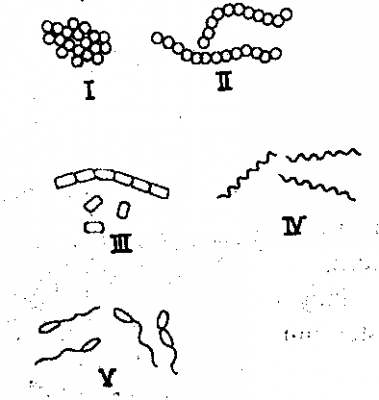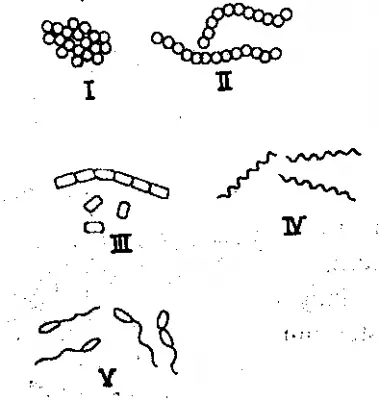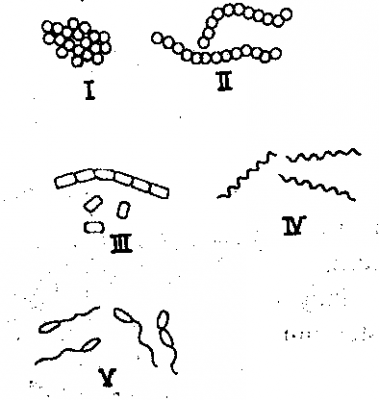The diagrams below are illustrations of forms in which a particular group of organisms exist. Study them and answer the question.

in which of the illustrated forms does the organism that causes cholera exist?
III
II
IV
V
Correct answer is D

V.
Vibrio: These are comma-shaped bacteria. They are curved rods and are often found in aquatic environments. Vibrio cholerae is an example, responsible for causing cholera.
The diagrams below are illustrations of forms in which a particular group of organisms exist. Study them and answer the question.

Which group of organisms is illustrated?
protozoa
viruses
fungi
bacteria
Correct answer is D
No explanation has been provided for this answer.
The food substance that would produce the highest amount of energy is
protein
amino acid
fat
glucose
Correct answer is C
The food substance that would produce the highest amount of energy is fat.
Fat is the most energy-dense macronutrient, providing 9 calories per gram. On the other hand, both carbohydrates (including glucose) and proteins provide 4 calories per gram. While amino acids are the building blocks of proteins, they are not a direct source of energy like fat and carbohydrates.
Which of the following activities is against the conservation of natural resources?
Contour ploughing
afforestation
establishment of game reserves
deforestation
Correct answer is C
Deforestation: Deforestation is the opposite of afforestation. It involves the clearing or removal of forests or trees from an area. Deforestation leads to the loss of valuable natural resources like timber, biodiversity, soil fertility, and water regulation. It disrupts ecosystems, accelerates soil erosion, and releases stored carbon dioxide, contributing to climate change. Deforestation is detrimental to the conservation of natural resources and has serious environmental consequences.
Organisms that feed on dead, decaying tissues of other organisms are known as
saprophytes
autotrophs
parasites
heterotrophs
Correct answer is A
Organisms that feed on dead, decaying tissues of other organisms are known as "saprophytes." Saprophytes, also known as saprotrophs or decomposers, are organisms that obtain their nutrition by feeding on dead, decaying organic matter (detritus) from other organisms.
WAEC Subjects
Aptitude Tests
Latest Jobs
Indorama Eleme Fertilizer & Chemicals Limited (IEFCL) Graduate Engineer Internship Program 2024
Diploma Engineer Internship Program at Indorama Eleme Fertilizer & Chemicals Limited (IEFCL)
Admin Officer - Airline Industry at Ascentech Services Limited
Area Sales Manager at Airtel Nigeria
State Business Manager at Airtel Nigeria
Inventory Manager at a Reputable Agricultural Company
Supply Chain Officer at Kellogg's Tolaram Nigeria Limited (KTNL)
Warehouse Manager at Shulifang Biotechnology FZE
Capability Development & Execution Excellence Manager (Rivers) at Airtel Nigeria
Regional Security Manager - Northeast Region at Airtel Nigeria